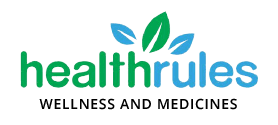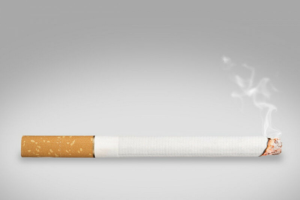
Human-Centered Innovation: The Future of Preventive Health with Joe Kiani of Masimo
Health innovation is often described in terms of algorithms, devices, and efficiency. Yet the breakthroughs that endure in prevention and wellness are not the ones that capture the most data, but the ones that turn numbers into guidance people can act on. Joe Kiani, Masimo and Willow Laboratoriesfounder, has long argued that prevention only works when technology feels supportive rather than overwhelming. His latest project, Nutu™, embodies this belief, using data to show how small, sustainable habits add up over time. Together, the philosophy and the tool highlight a wider truth that innovation succeeds when it connects with daily life, not just with clinical charts.
The value of pairing compassion with information is clear. Data alone cannot persuade people to walk after dinner, reduce sugar, or check in with a doctor sooner. But when technology provides context that explains why small changes matter, and when it offers encouragement instead of criticism, it builds trust. That trust becomes the bridge between what technology can achieve and what people are willing to embrace.
Empathy as the Engine of Innovation
Prevention succeeds when people feel understood. The most effective health technologies are not those that deliver the most features, but those that approach users with patience and encouragement. Empathy turns data into guidance that people can actually use. Instead of overwhelming users with numbers, well-designed tools explain why small adjustments matter and celebrate steady progress. This creates a sense of partnership rather than pressure, making people more likely to return to the tool day after day.
When empathy is at the center of design, innovation becomes less about enforcing compliance and more about building trust. It shifts the focus from telling people what they should do to supporting what they can do. That distinction is what allows preventive tools to move from being short-lived experiments to lasting parts of daily life.
Designing Empathy into Technology
The intersection of compassion and data is most visible in tools that support sustainable change. While pharmaceutical innovations continue to advance, prevention often falls short because it depends on behavior change that is difficult to sustain. That is the problem Nutu was built to address. Joe Kiani, Masimo founder, explains, “I want to help people and allow them to make better decisions.” The app’s very name, derived from the Latin nutus meaning “a nod” or “nudge,” reflects this quiet strategy of guiding people through small, manageable insights that align with their daily routines.
This approach demonstrates why empathetic design matters. Rather than overwhelming people with data or rigid demands, Nutu and similar tools emphasize encouragement and gradual progress. By positioning prevention as a series of achievable steps supported by technology, innovators make it easier for people to stay consistent. Empathy becomes not just a design principle but a proven method for helping behavior change take root.
Empathy as the Engine of Innovation
Prevention succeeds when people feel understood. The most effective health technologies are not those packed with features, but those that approach users with patience and encouragement. Empathy turns raw data into guidance people can act on. Instead of overwhelming users with statistics, well-designed tools explain why small adjustments matter and celebrate steady progress. This creates a sense of partnership rather than pressure, making healthy routines easier to sustain over time.
When empathy guides design, innovation shifts from enforcing compliance to building trust. It reframes prevention as support for what people can realistically do, rather than commands about what they should do. That principle has become central to today’s most promising preventive technologies, setting the stage for tools that rely on gentle nudges and practical reinforcement to help people stay consistent.
Building Trust Through Personalization
Personalization is one of the clearest ways empathy takes shape in prevention. When health tools recognize individual circumstances, they foster stronger engagement and reduce the risk of discouragement. A fitness program that adjusts goals for older adults or people managing chronic conditions, for example, helps build confidence by celebrating progress that feels attainable. This inclusive approach ensures that prevention supports people where they are, rather than pushing them toward unrealistic benchmarks.
The impact of personalization extends beyond individual experience. Research shows that tailored prevention tools improve adherence, which in turn lowers long-term healthcare costs. Employers, insurers, and policymakers see gains through healthier, more resilient populations, while individuals feel acknowledged and supported. By weaving personalization with compassion, innovators are proving that prevention can be both scalable and deeply human.
Lessons for the Future of Health Innovation
Technology and empathy are increasingly converging to set a new standard for prevention. The lesson is clear that health tools are most effective when people feel understood. As communities everywhere grapple with rising chronic disease rates, the challenge is not only to track risks but to create trust and resilience. Prevention designed with compassion keeps people engaged even when progress is gradual, making empathy as practical as it is ethical.
This approach is also shaping policy and investment. Programs that embed empathy into design tend to achieve higher engagement and greater sustainability. Equity becomes a cornerstone, ensuring that prevention reaches populations who often face the greatest barriers to care. By focusing on humanity as much as efficiency, innovators and leaders are reframing prevention into a model that is both practical and hopeful. Their efforts encourage collaboration across sectors, aligning business, healthcare, and communities around common goals. In this way, prevention moves from being a supplement to becoming a structural feature of how societies support health.
Ultimately, the future of prevention will not be defined by data alone but by how well technology listens. When numbers are paired with empathy, prevention stops being an abstract goal and becomes a daily practice. Innovators and leaders, including Joe Kiani, Masimo founder, have shown that progress depends on tools and systems that feel supportive rather than intimidating. That combination of technical precision and human care is what makes prevention sustainable across cultures and generations. It also builds the trust required for people to welcome these tools into the most personal parts of their lives.



Average Rating